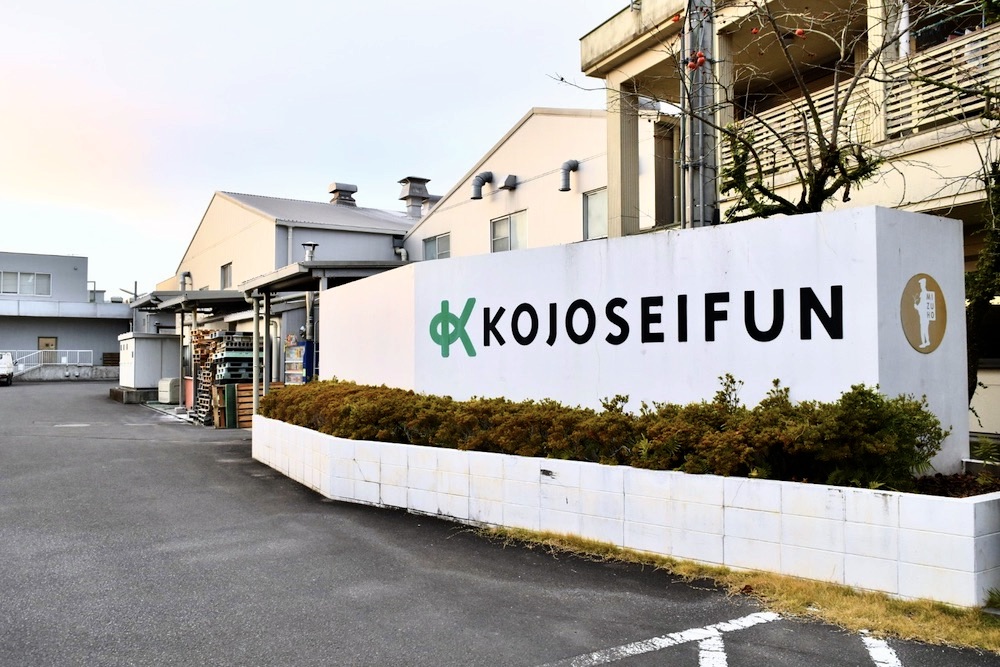Bringing the one and only rice flour to the world in step with Japanese food culture
Yositeru Kojo, Director and Pastry Chef, Kojo Seifun Ltd
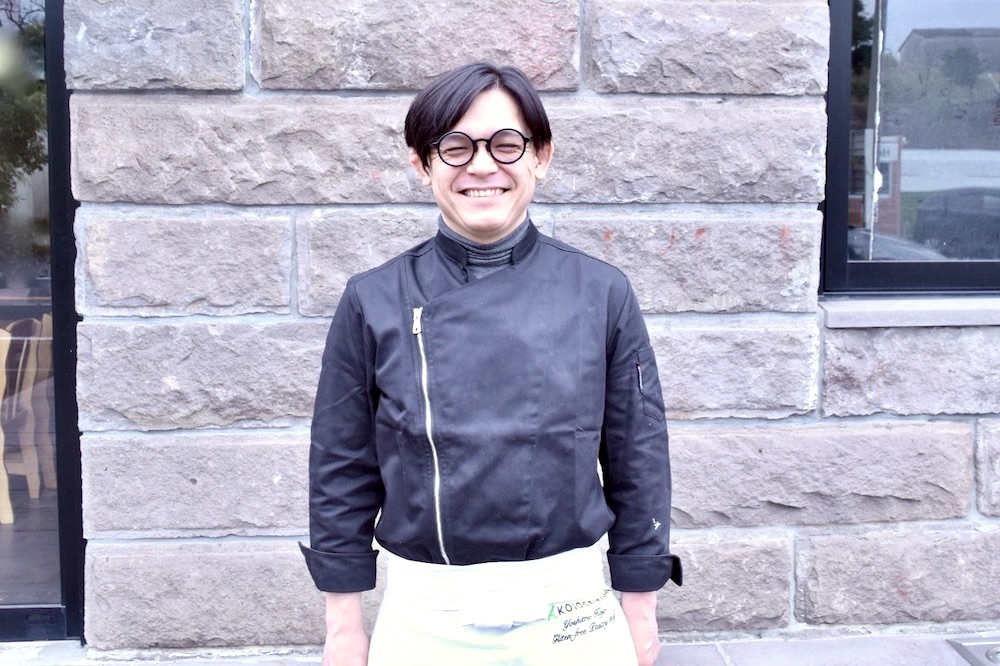
Various rice flours that can be multiplied
Rice flour is made by grinding rice, and there are two types of rice flour: glutinous rice and non-glutinous rice. Glutinous rice” is composed of amylopectin, while “Uruchi-rice” is composed of starch with molecules called amylose and aminopectin. Glutinous rice” is slightly more glutinous.
We produce a variety of rice flours by combining various technologies, such as wet milling or dry milling, which milling machine to use, and how much grain to make.The rice flour produced from Uruchi rice is called Joshinko, but there are various types of Joshinkoshinko making machines, and different types of Joshinko can be made with different characteristics. The characteristics also vary depending on the size of the grains.
The finer grains of Joshinko are called Joyouko, and the finer grains of Joyouko are rice flour, which is generally recognized as a substitute for wheat flour, or “premium rice flour” in the case of our products.
The reason for the existence of various names, such as joshinko and joyoko, is that different confections are made using them. Joshinko is used for familiar standard Japanese confections such as dumplings and Kashiwa Mochi, while joyoyo flour was born from the desire of wagashi craftsmen to create more delicate and elegant confections.
However, even fine-grained top-use flour feels coarse-grained when used to make Western-style confections. Therefore, we have made the grains even finer to eliminate any sense of discomfort, and this is our premium rice flour. We have a team of excellent craftsmen, and that is why our customers ask us for various difficult problems and requests. These requests have led to the birth of a variety of products.
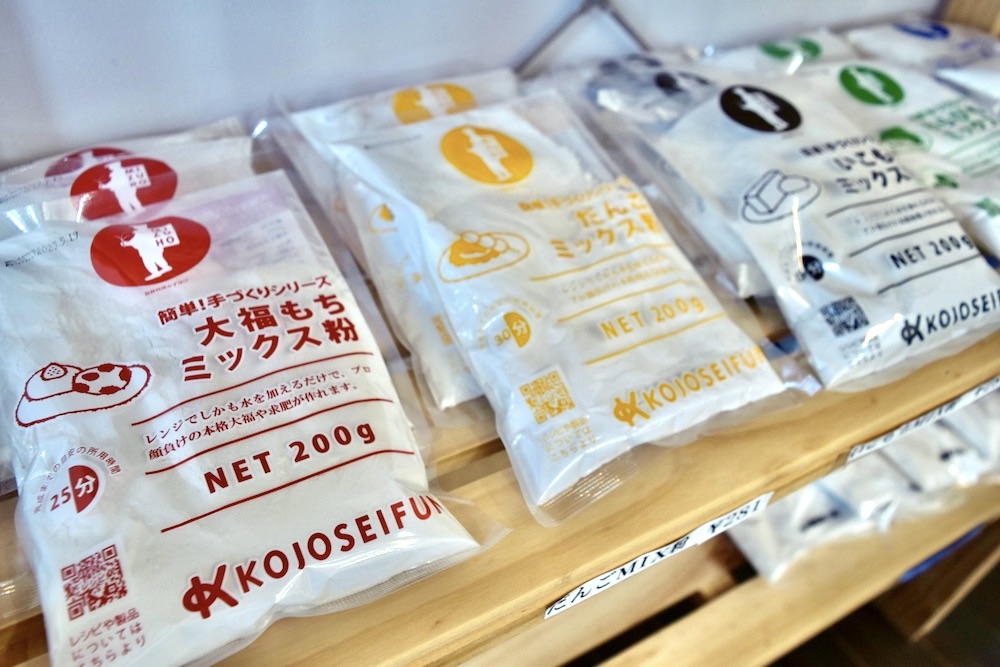
From “Substitute” to “Mainstay
Rice flour and wheat flour have different moisture values and oil absorption rates, so when rice flour is incorporated into a typical recipe, the result will be different from that made with wheat flour. Our strength lies in our ability to avoid such situations by manufacturing rice flour while making adjustments in advance, enabling the same recipe to be prepared with wheat flour.
To get to this point, the sales staff went around to customers with prototypes and actually used them, while feedback on their impressions was given to the flour millers for further research. At the same time, they are also developing original recipes for making delicious dishes and confections using their rice flour. Our goal is to produce rice flour that can be used to make dishes and confections that people feel comfortable eating without going to the trouble of saying “wheat flour-free. We pursue the production of rice flour that is delicious and can play a leading role without compromising the “alternative. In the past, we have had great difficulty in developing rice flour exclusively for bread, but here, too, we were able to create it through friendly competition among all of us.
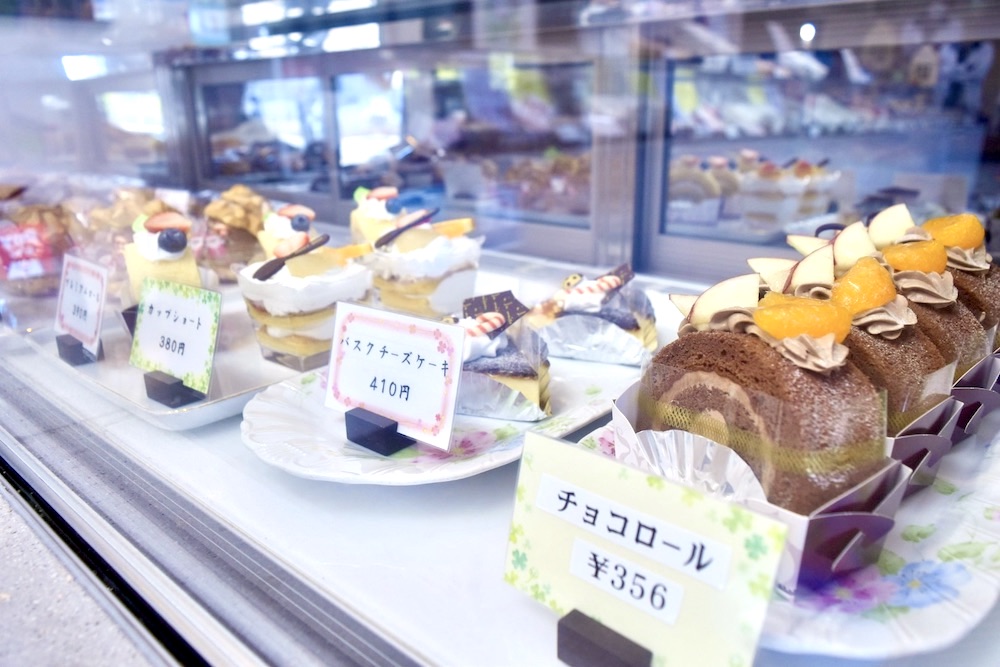
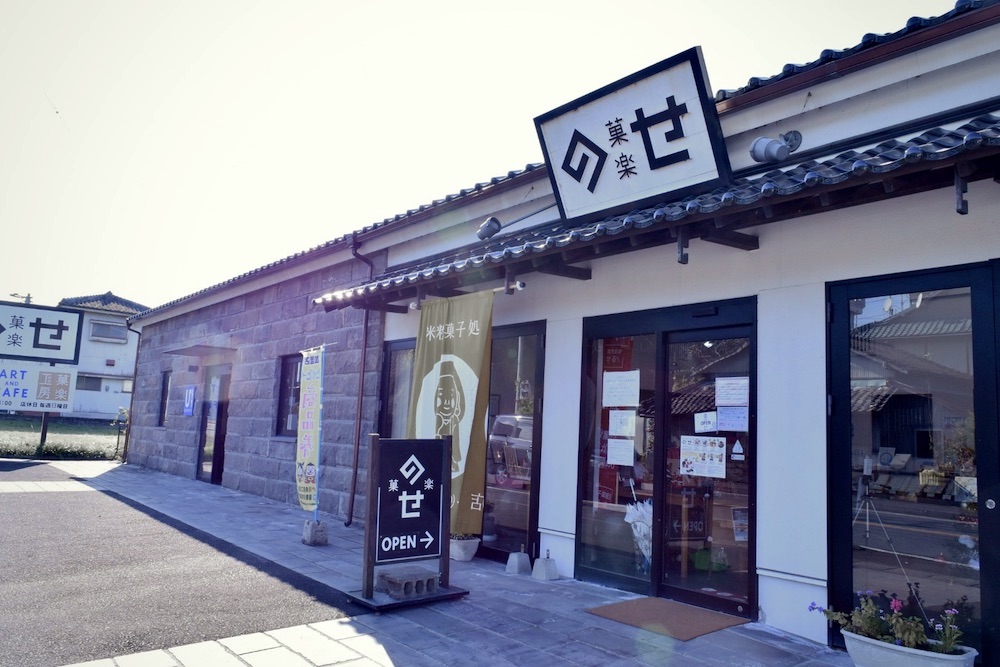
All Western-style confections are also made with rice flour. All western confectioneries are made with rice flour and sold at Nose Karaku, a specialty store for rice-flour sweets located on the headquarters’ premises.
Great acclaim in Paris
I used to want to pursue a career in painting, but after graduating from university, I studied confectionery making at a confectionery school with a view to taking over the family business in the future. Since returning to Kagoshima, I have applied that knowledge to rice flour production.
About 10 years ago, in an effort to promote our products to people overseas, I started a project in which I traveled to the United States, Germany, France, Australia, and other countries to have local people actually see and taste our rice-flour pastries and bread. In the early days, I was not able to offer good products, partly because my skills were not yet up to par, but when I recently presented a rice-flour lemon cake at an exhibition in Paris, many people were surprised and said, “Delicious! It was a great success. I had people taste it one after another.
Aiming for the Top of the World
Rice flour is a food produced not only in Japan but also in many other countries around the world. However, I feel that “Japanese rice flour” has high potential. Rice flour products from overseas are mainly based on other grains, with rice flour used as a sub. I feel a little bit of a bland taste. In Japan, on the other hand, rice flour is the main ingredient, and its milling technology and taste are top level even by global standards. Our rice flour is the only one that still needs more research for Danish rice flour, but for other confectionery, bread, and cooking products, it has already reached a level where it can replace wheat flour.
A Bright Future for Rice Flour
In 2013, “Japanese food” was registered as a UNESCO World Heritage Site. I have been overseas for almost 10 years tasting local cuisine and pastries, and in recent years, I feel that the food trend is moving toward lighter, gentler, and more sensitive…in other words, toward Japanese food. This is a very good tailwind for rice flour, a delicate product born in Japan. Now is the time to promote the delicious, gluten-free, and healthy characteristics of rice flour.
